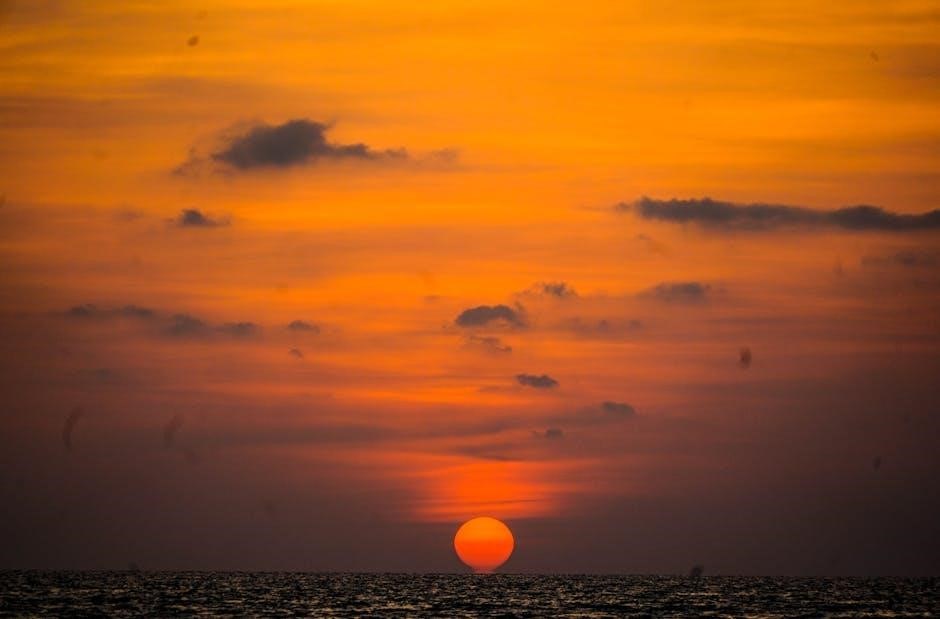Understanding water temperature is key to predicting crappie behavior, as it influences spawning, feeding, and habitat preferences. This guide explores how temperature affects crappie activity, helping anglers maximize their fishing success.
1.1 Understanding the Importance of Water Temperature for Crappie
Water temperature plays a critical role in determining crappie behavior, metabolism, and overall activity levels. Crappie are ectothermic, meaning their body temperature is regulated by their environment, making them highly sensitive to changes in water conditions. Temperature influences spawning patterns, feeding habits, and energy expenditure. For instance, crappie typically spawn when water temperatures reach 55-68°F, with specific variations between black and white crappie. Feeding activity also fluctuates with temperature, as warmer waters increase metabolism, while cooler temperatures slow it down. Understanding these temperature-driven behaviors helps anglers predict where crappie will be and how active they will be. This knowledge is essential for selecting the right lures, presentations, and fishing locations. By monitoring water temperature, anglers can better align their strategies with crappie behavior, enhancing their chances of a successful fishing experience. Temperature is a cornerstone factor in crappie ecology and angling success.
1.2 Overview of Crappie Behavior and Habitat
Crappie are highly adaptable fish, thriving in various aquatic environments, including lakes, ponds, and slow-moving rivers. They prefer areas with abundant cover, such as submerged vegetation, brush piles, or structural elements like docks and bridge pylons. Crappie behavior is influenced by seasonal changes, with distinct patterns in movement and activity. During warmer months, they often inhabit shallower waters near vegetation, feeding on small baitfish, insects, and crustaceans. In colder conditions, they tend to congregate in deeper, more stable environments. Their habitat preferences vary by species, with black crappie favoring clearer waters and white crappie tolerating murkier conditions. Understanding their habitat and behavioral patterns is crucial for effective fishing strategies, as crappie are often found near specific structures or transitions in water depth and vegetation.
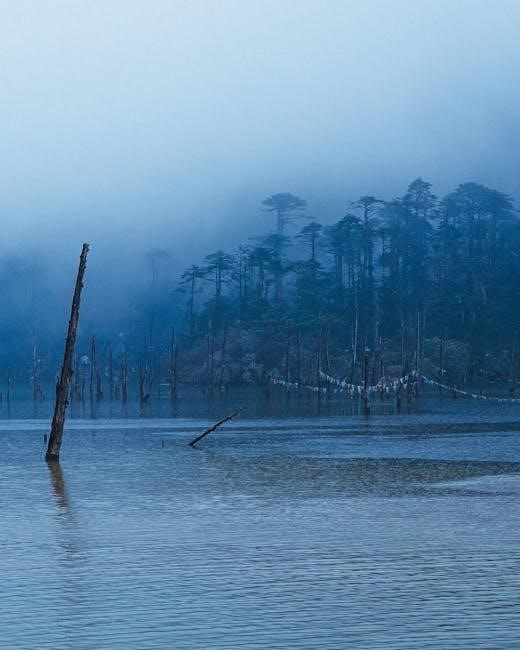
Crappie Seasonal Patterns and Water Temperature
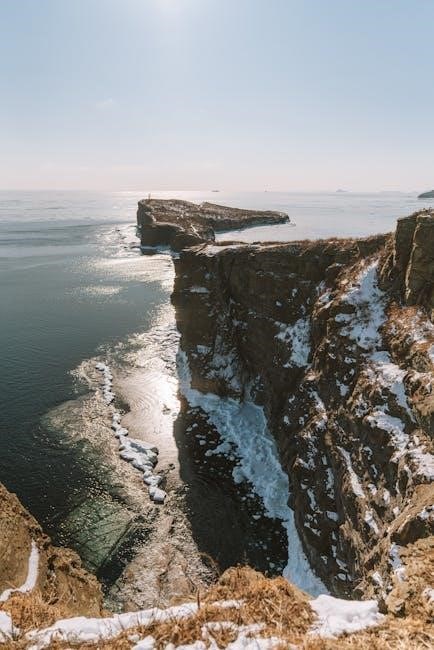
Crappie behavior shifts with seasonal water temperature changes, influencing their spawning, feeding, and habitat preferences. Understanding these patterns helps anglers predict movements and optimize fishing strategies year-round.
2.1 Spring Crappie Behavior and Water Temperature
During spring, crappie behavior is significantly influenced by rising water temperatures. As temperatures increase from the 50s into the 60s Fahrenheit, crappie begin migrating from deeper wintering areas to shallower zones. They congregate near structures like creek channels, rocks, and submerged vegetation, preparing for the spawn. Males typically start building nests in water 2-8 feet deep when temperatures stabilize around 60°F. Feeding activity increases as they replenish energy reserves post-winter. Crappie are most active in water temperatures between 55°F and 65°F during this season. Anglers often find success targeting areas with abundant cover and stable temperatures, as crappie are more predictable in their movements during this time. Understanding these patterns is crucial for optimizing spring fishing strategies;
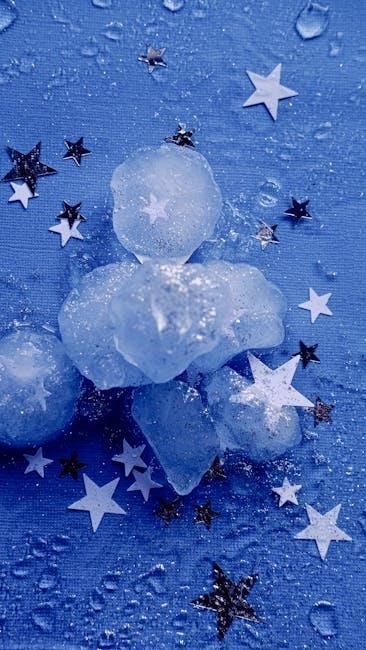
2.2 Summer Crappie Behavior and Water Temperature
During summer, crappie behavior adapts to warmer water temperatures, typically ranging from 70°F to 85°F. As temperatures rise, crappie often seek deeper, cooler waters, especially in structures like submerged trees or rock formations. They may suspend in the thermocline, where oxygen levels and temperature create a comfortable zone. Feeding activity peaks during early morning or late evening when temperatures are cooler. Crappie tend to be less active in the heat of the day, seeking shade and cooler pockets. Anglers should focus on deeper areas, using jigs or spoons that mimic baitfish. Retrieval speeds should be slower, as crappie metabolism slows in warmer water. Despite the heat, summer offers opportunities to target crappie in predictable patterns, especially around structural elements and thermal breaks.
2.3 Fall Crappie Behavior and Water Temperature
In the fall, as water temperatures gradually cool from the 70s to the 50s (°F), crappie behavior shifts to prepare for winter. They begin migrating from deeper summer habitats to shallower areas, often congregating around creek channels and structural elements like submerged trees. Feeding activity increases as crappie bulk up for the colder months, targeting baitfish and smaller aquatic organisms. During this transition, they may suspend in mid-water or near the bottom, depending on the thermocline. Anglers should focus on areas with abundant cover, such as submerged vegetation or sunken logs. Cooler water temperatures make crappie more active during midday, unlike their summer nocturnal tendencies. Using jigs or minnows near these transition zones can be highly effective. As temperatures drop below 50°F, crappie will start to move to deeper, more stable environments, signaling the end of their fall feeding frenzy.
2.4 Winter Crappie Behavior and Water Temperature
During winter, crappie behavior is significantly influenced by colder water temperatures, typically ranging from 38°F to 45°F. As temperatures drop, crappie become less active and tend to congregate in deeper, more stable environments, often 15–30 feet below the surface. They form tight schools near structural elements like drop-offs, submerged humps, or standing timber. Feeding activity slows, but crappie will still eat smaller prey like jigs or spoons if presented slowly and precisely. Anglers should focus on deeper pools and channels, using vertical presentations to target these lethargic fish. Water temperature stability is crucial during winter, as rapid changes can further reduce activity. Despite the cold, winter can offer excellent crappie fishing opportunities for those willing to adapt to their slower metabolism and deeper habitats. Patience and precise presentations are key to success during this season.
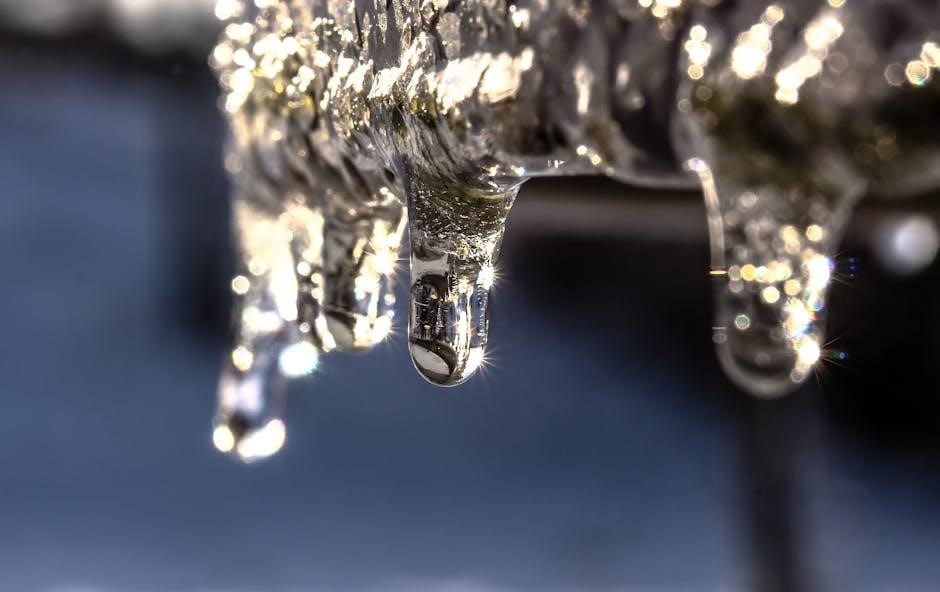
Optimal Water Temperatures for Crappie Activities
Crappie thrive in specific temperature ranges for spawning (55°F–68°F), feeding (50°F–70°F), and comfort (60°F–75°F), with white crappie slightly warmer than black crappie.
3.1 Spawning Temperature Range for Crappie
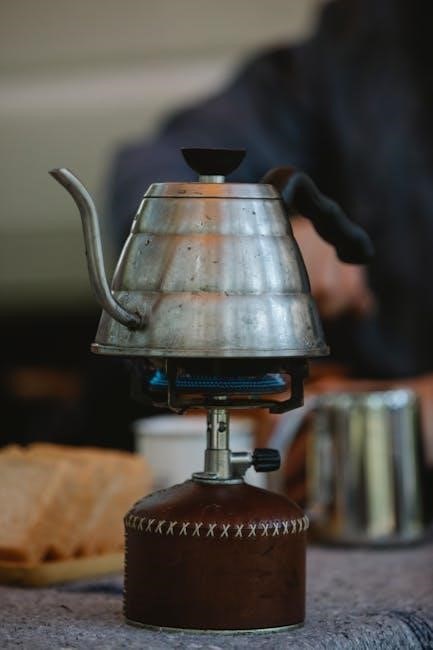
The crappie spawning process typically occurs when water temperatures reach a specific range, generally between 55°F and 68°F. During this period, crappie move to shallow areas with suitable structures like vegetation or submerged logs to lay eggs. White crappie tend to spawn at slightly warmer temperatures than black crappie, with white crappie spawning in waters as warm as 60°F to 65°F and black crappie spawning in 55°F to 62°F. The exact temperature range can vary depending on geographic location and water clarity. Stable water temperatures are crucial for successful spawning, as fluctuations can disrupt the process. Understanding these temperature thresholds is essential for anglers aiming to target crappie during their spawn, as it helps in identifying the best locations and timing for fishing.
- White crappie: 60°F–65°F
- Black crappie: 55°F–62°F
Optimal spawning conditions are further influenced by factors such as water depth and cover.
3.2 Feeding Temperature Range for Crappie
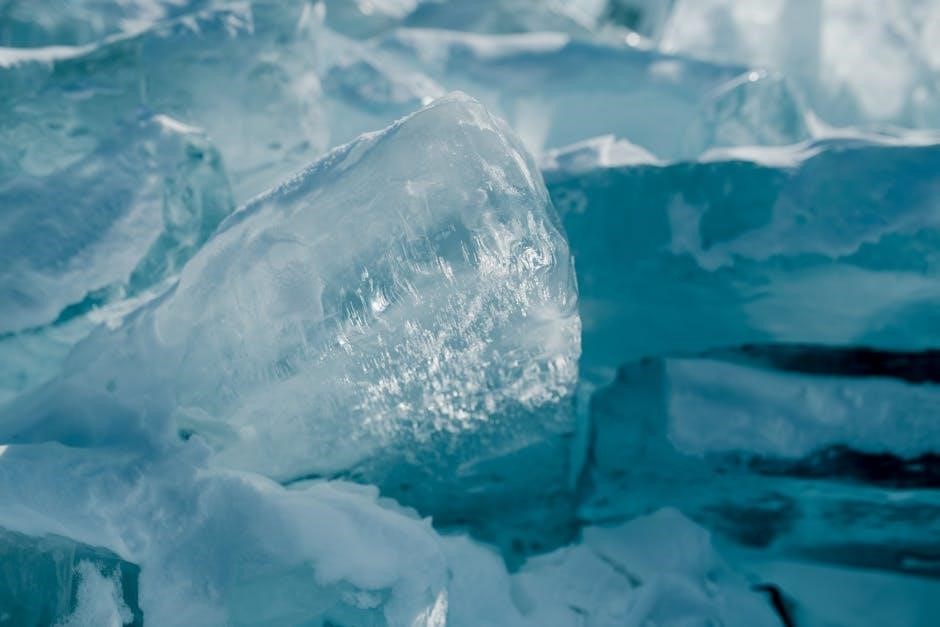
Crappie are most active feeders in water temperatures ranging from 50°F to 80°F, with their feeding intensity peaking during specific temperature ranges. In cooler waters, below 60°F, crappie tend to feed more aggressively as they prepare for colder months. As temperatures rise above 65°F, they may seek deeper, cooler waters or shaded areas to avoid overheating. During the summer months, when temperatures exceed 75°F, crappie often feed during early morning or late evening hours when water temperatures are slightly cooler. In the fall, as temperatures drop below 70°F, crappie become highly active again, feeding on baitfish and insects in preparation for winter. Understanding these feeding temperature ranges helps anglers choose the best times and locations to target crappie effectively.
- Peak feeding temperatures: 50°F–70°F
- Summer feeding: 65°F–75°F (early morning/late evening)
- Fall feeding: 60°F–70°F
Temperature plays a critical role in determining crappie feeding behavior and activity levels.
3.3 Comfort Zone Water Temperatures for Crappie
Crappie thrive in water temperatures between 65°F and 75°F, which is considered their comfort zone. Within this range, they exhibit heightened activity, feeding, and movement. Temperatures above 75°F can stress crappie, forcing them to seek deeper, cooler waters or shaded areas. Conversely, when temperatures drop below 60°F, crappie become less active and may retreat to deeper, warmer areas. During summer, they often stay in 15–20 feet of water, while in winter, they may descend to 30–40 feet to find stable temperatures. Understanding their comfort zone helps anglers identify the most productive fishing spots based on seasonal temperature changes.
- Optimal comfort range: 65°F–75°F
- Summer depth: 15–20 feet
- Winter depth: 30–40 feet
Temperature stability is key to Crappie comfort and activity levels.
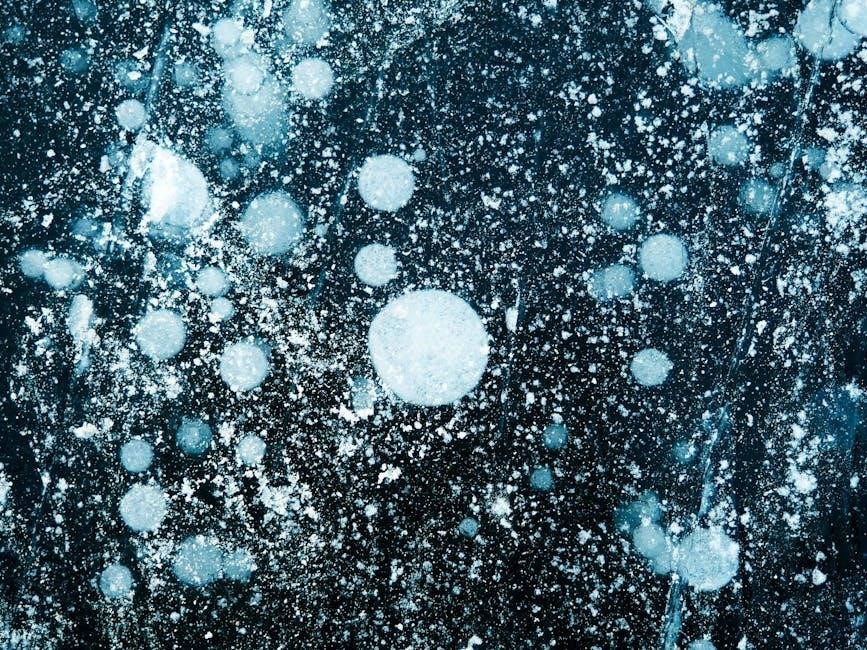
Locating Crappie Based on Water Temperature
Crappie locations vary with water temperature fluctuations, moving to deeper waters in summer and shallower areas during spring spawning, often near submerged structures and cover.
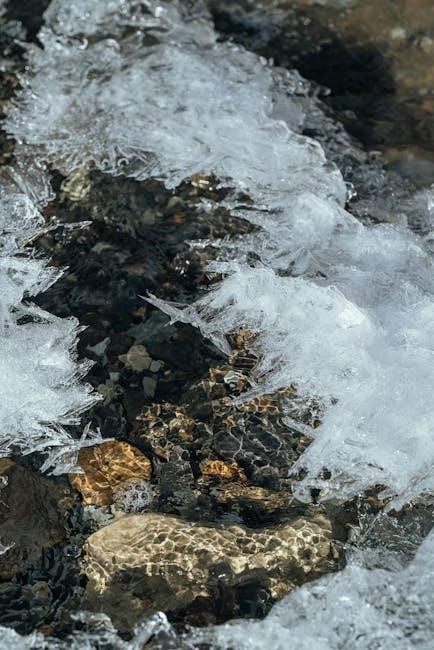
4.1 Using Thermoclines to Find Crappie
Thermoclines, layers where water temperature changes rapidly, are crucial for locating crappie. During summer, crappie often gather near these layers, where oxygen levels are stable. Anglers can use depth finders to identify thermoclines, typically found between 10-30 feet deep. Once located, crappie tend to suspend near the thermocline, feeding on baitfish. Jigs and minnows are effective lures here. Understanding thermocline dynamics helps anglers target crappie more effectively, especially in warm weather when fish seek comfort zones. This strategy is particularly useful in deep lakes and reservoirs where thermoclines are more pronounced.
4.2 Identifying Structures and Cover at Specific Temperatures
Crappie often relate to specific structures and cover based on water temperature. In spring, when temperatures rise into the 50s and 60s, crappie move to shallow areas with abundant vegetation or submerged structures like logs or rocks. During summer, as temperatures climb above 70 degrees, they seek deeper cover such as drop-offs, bridge pylons, or sunken trees. In fall, cooling water drives crappie to mid-depth structures like creek channels or submerged grass beds. In winter, they gravitate toward deeper, more stable environments like humps or ledges. Understanding these patterns helps anglers pinpoint crappie locations. For example, in early spring, focus on shallow cover near spawning areas, while in summer, target deeper structures where fish escape the heat. This approach maximizes fishing success by aligning tactics with crappie behavior.
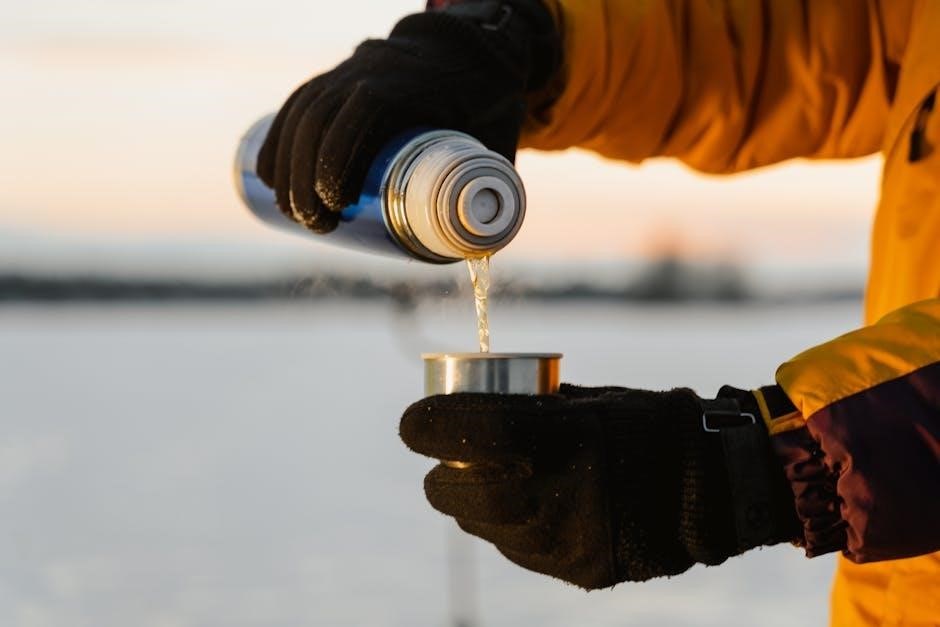
Adjusting Fishing Strategies Based on Water Temperature
Adapt lures, retrieval speeds, and presentation to match crappie behavior at different temperatures. In warmer waters, use faster-moving lures, while slower, subtler presentations work best in cooler conditions.
5.1 Choosing the Right Lures for Different Temperature Ranges
In warmer water (above 70°F), crappie are more active, making them susceptible to vibrant jigs and spinners. Use bright colors to attract their attention in these conditions. During cooler temperatures (50°F to 70°F), opt for smaller, more subtle lures like minnows or soft plastics, which mimic their natural prey. In cold water (below 50°F), crappie metabolism slows, so use slow-moving baits like live bait or small spoons to entice strikes. Always consider the forage base and water clarity when selecting lures, as these factors influence visibility and appeal. Matching the lure to the temperature ensures a higher likelihood of success, as crappie behavior and preferences change with the seasons.
5.2 Adjusting Retrieval Speed and Presentation
Water temperature significantly influences the optimal retrieval speed and presentation when targeting crappie. In warmer water (above 70°F), crappie are more aggressive, so faster retrieves with jigs or spinnerbaits can be effective. However, in cooler temperatures (50°F to 70°F), slower, more deliberate presentations are often better, as crappie metabolism slows. During the cold winter months (below 50°F), use extremely slow, subtle movements, such as hopping a jig or dragging a lure along the bottom, to entice strikes. Additionally, water clarity plays a role: in clear water, natural presentations are key, while in stained water, brighter colors and slightly faster action may work. Adjusting your retrieve speed and presentation to match the temperature and conditions ensures you meet crappie where they are most active and receptive to feeding.
5.3 Time of Day Considerations for Crappie Fishing
The time of day plays a crucial role in crappie fishing, as their activity often peaks during specific periods. Early morning and late evening are typically the best times, as crappie tend to feed more actively during these low-light conditions. In warmer water temperatures, crappie may move deeper during the midday heat, making them less accessible. However, in cooler water, they may remain active throughout the day. During summer, focus on dawn and dusk when crappie are more likely to move into shallower areas to feed. In winter, midday can be productive as the sun warms the water slightly. Understanding these patterns helps anglers optimize their fishing efforts by targeting crappie during their most active feeding times, increasing the chances of a successful catch.
Understanding crappie behavior through water temperature is crucial for successful fishing. Adapt strategies based on seasonal changes and use the right techniques for optimal results.
6.1 Summarizing Key Points
Water temperature significantly influences crappie behavior, dictating their spawning, feeding, and habitat preferences. Crappie typically spawn when temperatures range between 62°F and 68°F, moving to shallower areas with suitable cover. In spring, they migrate to nearshore zones, while summer and winter push them to deeper, cooler waters. Feeding activity peaks at specific temperature ranges, with crappie seeking structures like submerged vegetation or drop-offs. Understanding these patterns allows anglers to adjust strategies, such as lure selection and retrieval speed, enhancing fishing success. By monitoring water temperature, anglers can better predict crappie movements and behaviors, ultimately improving their chances of landing these elusive fish.
6.2 Final Tips for Successful Crappie Fishing
To maximize your crappie fishing success, always monitor water temperature to predict behavior and movements. Use jigs or minnows during spawning seasons when temperatures are between 62°F and 68°F. In warmer months, try crankbaits or spinnerbaits in deeper waters. During colder periods, slow down your presentation and target structures like submerged vegetation or drop-offs. Pay attention to time of day, as crappie are often most active during early morning or late evening; Experiment with different depths and covers, as crappie may shift locations based on temperature fluctuations. Finally, stay patient and adaptable, as crappie behavior can change rapidly with environmental conditions. By combining these strategies, you’ll increase your chances of landing more crappie throughout the year.
